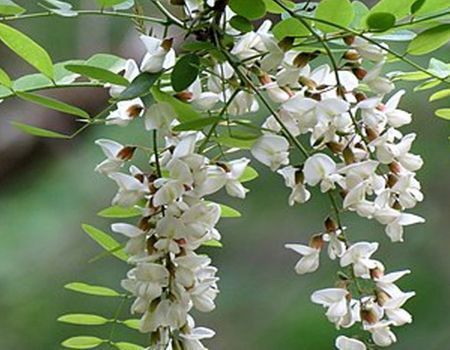Black Locust

Scientific Name: Robinia pseudoacacia
Common Name: Black locust, false acacia
Plant Family: Fabaceae (Legume family)
Indigenous Uses
As a food, the bark was steeped as a tea. Medicinally, the root bark was chewed as an emetic, alleviated toothache, and was used to flavor other medicines. The wood was valued for craft purposes, including fence posts, bows, flintmaking batons, pegs for log cabins, sills for houses, blowgun darts, and as large wood mallets. Black locust trees supported livestock, offering a tonic tea for cows, the large seedpods serving as forage for chickens, and leaves as forage for horses.
Edible Parts
All parts of black locust are toxic except for the edible flowers, which can be enjoyed raw, cooked into fritters, added to batters, and used in infusions, wines, and syrups. Look for blossoms between the spring equinox and summer solstice.

This project was made possible by a grant from Maryland Humanities, with funding received from the Maryland Historical Trust in the Maryland Department of Planning. Maryland Humanities’ Grants Program is also supported by the National Endowment for the Humanities and private funders. Any views, findings, conclusions, or recommendations expressed on this website do not necessarily represent those of Maryland Humanities, Maryland Historical Trust, Maryland Department of Planning, or National Endowment for the Humanities.

